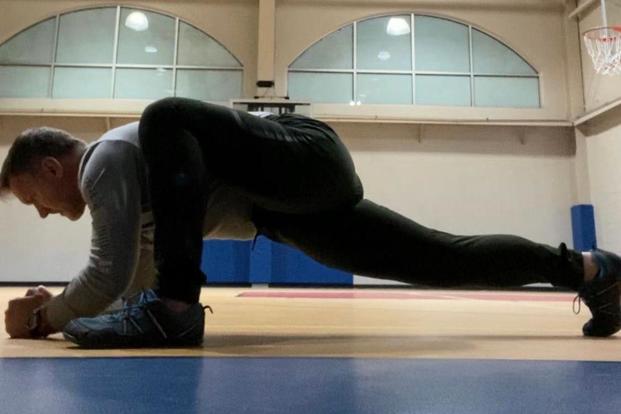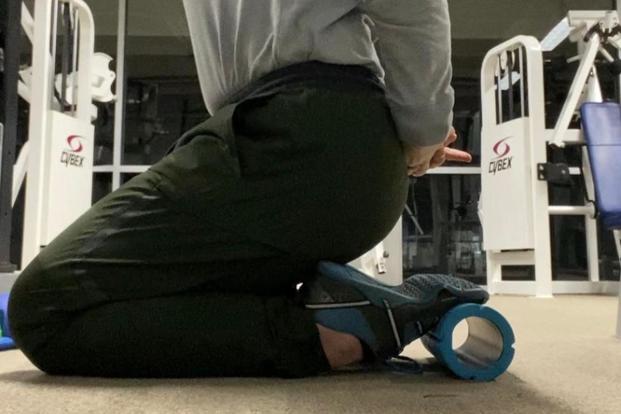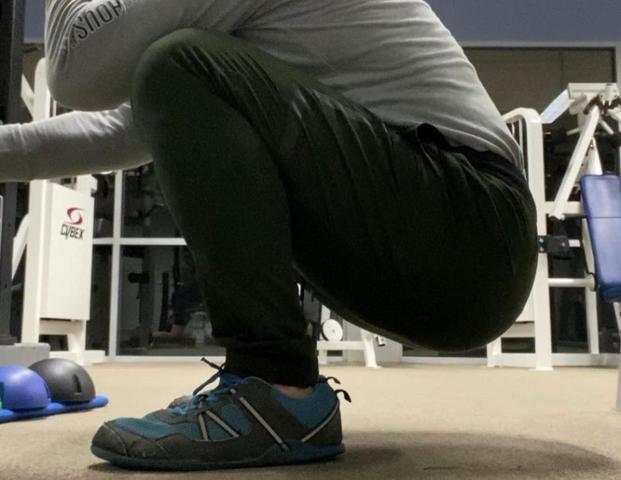Learning to tread water is not easy. Many candidates struggle with treading in military training programs that involve water competency, diving and life-saving duties. The unfortunate reason is that most people underestimate the challenges ahead of them.
Treading is tough, especially if you have a lower-than-average, body-fat percentage that makes simply floating not an option. When you're lean, you must expend even more effort to stay above water.
Like the crowd favorite Mobility Day, this workout introduces treading water as the primary non-impact cardio source in a series of five minutes of treading and five minutes of stretching and mobility sessions.
Repeat five times.
No-hand tread: 5 minutes
Stretch and foam roller: 5 minutes
Treading Water
The goal here is to work hip, knee and ankle mobility to get an effective scissor kick, breaststroke kick or egg-beater kick. Most people I teach have problems with general mobility of the hips to the feet, a condition that makes their kicks nearly useless. You need to produce significant force in the down direction, so you can keep your head above the water's surface.
A breaststroke or egg beater (which is nothing more than an alternating breaststroke kick) requires a downward kick movement, where you push water with the inside of your shin and foot as if you are kicking a soccer ball to the bottom of the pool.
The egg-beater kick's name is a misnomer. The stroke does not require the swimmer to rotate their legs in a horizontal circular path, like an egg beater spins, but uses more of a vertical pattern so you produce vertical lift with these alternating breaststroke kicks. See beginner egg-beater kick instruction video.
Once you see the stroke and how it requires hip, leg, knee and ankle mobility, you will understand the need for the out-of-water mobility sessions in this workout.
Mobility
Bring a pad and foam roller to the pool so you can spend the five minutes out of the water being productive by stretching the hips, knees, inner thighs and ankles with basic static stretches.
If you still need more of a warmup, you can spend the first five minutes of stretching in the water (chest deep) and do a series of dynamic stretches (in the water) to help warm up and loosen the muscles and joints of the lower body a bit more before static stretching.
You can decide how to stretch during the five-minute sessions. Many will perform some of their old favorites like hurdler strides, toe touches or hip openers, or choose options straight from yoga class.
Here are some of my favorites, but find the ones that help you improve any kick range-of-motion deficiencies you have.
Stretch 1: Half Pigeon Pose

This one is tougher than it looks but is a good way to stretch the hips, lower back, inner thigh and knee.
Stretch 2: Crescent, aka the World's Greatest Stretch

This one is pretty darn good even if the nickname of the crescent pose could be a bit of an exaggeration. There are many variations, such as twisting the upper body and straightening the front leg to stretch the hamstrings more.
Stretch 3: Sitting on Shins

This one stretches knees and ankles. If you want more of an ankle stretch, place a small lift for the toes. You can also stretch your knees more by opening the legs and pulling your feet to the side (inner feet on the floor), as if kicking a soccer ball through the floor. This helps with positioning of egg-beater kick power. You will really need ankle mobility when swimming with the big SCUBA fins required for military diving.
Stretch 4: Squat

How low can you go with your squat? Can you bring your hips closer to your feet and be more vertical with your torso? This challenges ankle, hip and knee mobility. You will need this exercise to master many of the treading kicks.
Stretch 5: Pigeon Pose

This one will help you open your hips and hamstrings.
Follow these recommendations to open your hips, knees, inner thighs and ankles. This will make treading and other swimming kicks produce more power as you use a fuller range of motion. Don't skip mobility day and add more exercises to your day if flexibility and mobility are weaknesses that prevent you from swimming or treading well.
Stew Smith is a former Navy SEAL and fitness author certified as a Strength and Conditioning Specialist (CSCS) with the National Strength and Conditioning Association. Visit his Fitness eBook store if you're looking to start a workout program to create a healthy lifestyle. Send your fitness questions to stew@stewsmith.com.
Want to Learn More About Military Life?
Whether you're thinking of joining the military, looking for fitness and basic training tips, or keeping up with military life and benefits, Military.com has you covered. Subscribe to Military.com to have military news, updates and resources delivered directly to your inbox.


















